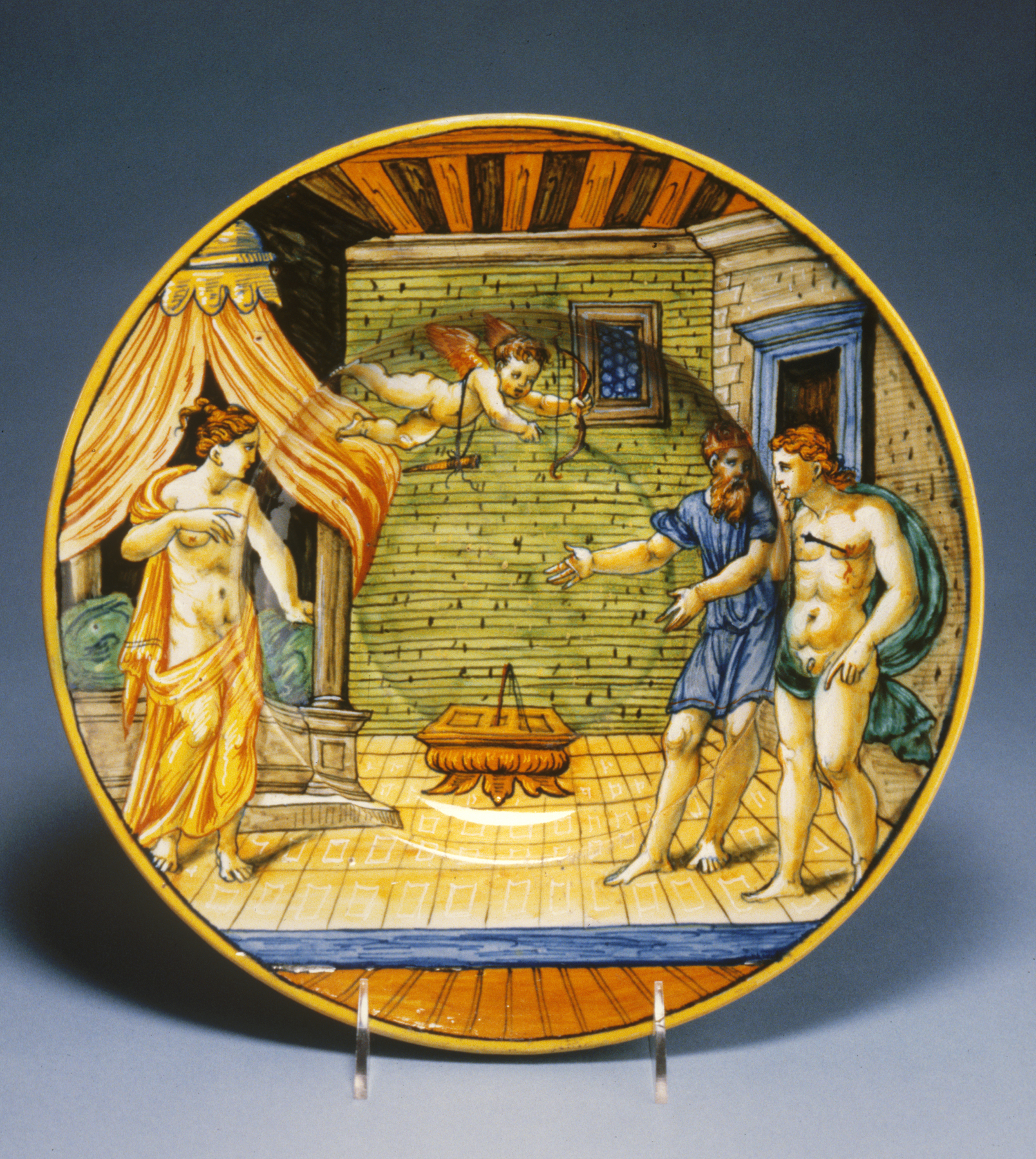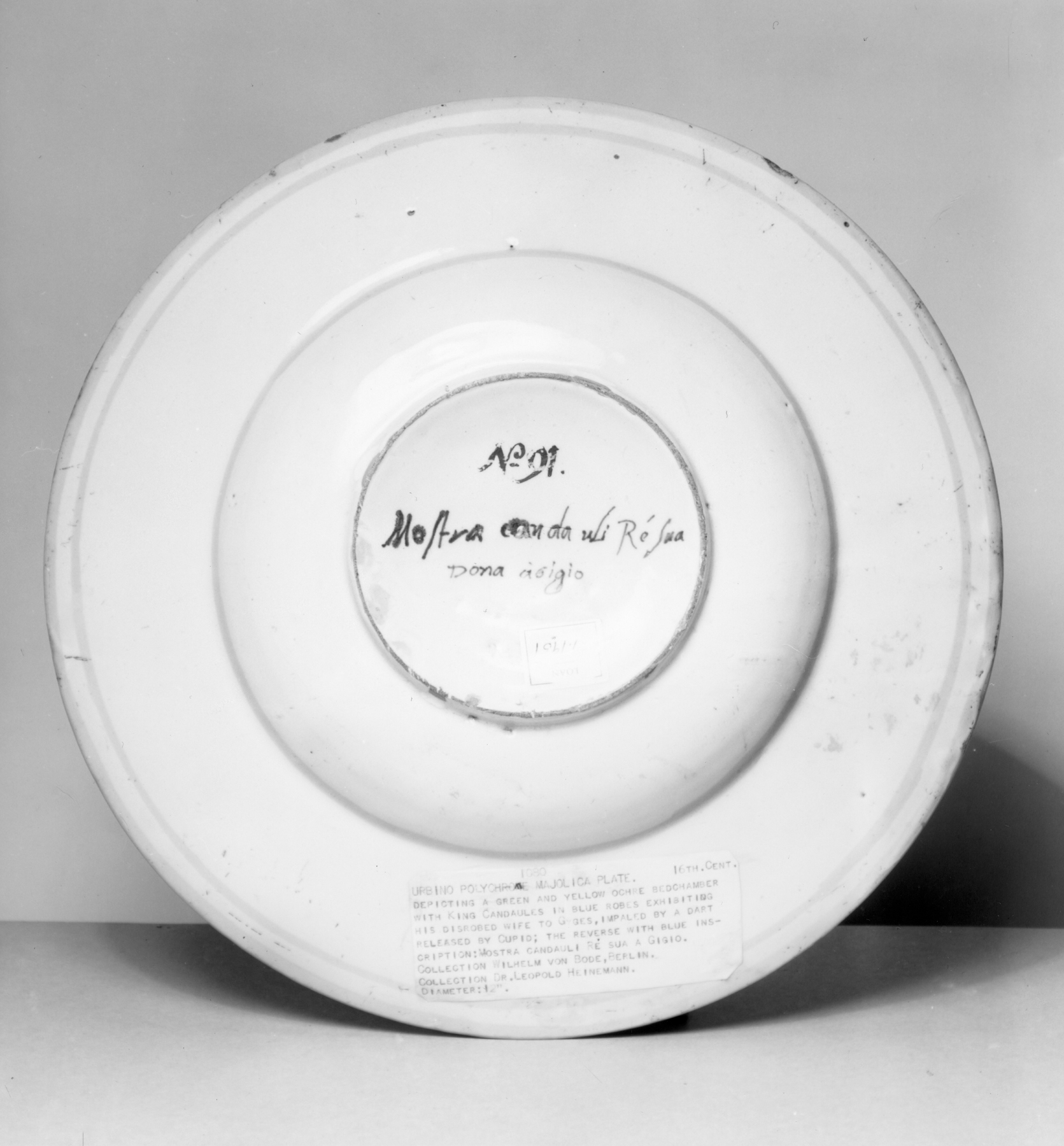Dish with King Candaules Exhibiting His Wife Nyssia to Gyges
(Renaissance Europe )
This dish depicts an episode from the ancient Greek historian Herodotus’ (484-425 BCE) “The Histories,” and the Roman historian Gnaeus Pompeius Trogus’ “Philippic Histories.” According to both texts, King Candaules of Lydia often boasted of his wife’s beauty to anyone who would listen, and showed the naked Queen Nyssia to his confidant, Gyges. Candaules’ actions ultimately caused his own downfall, as Nyssia was so outraged that she demanded Gyges to murder her husband in revenge. Gyges then married the queen and became king himself. On this dish, Gyges is shown as a victim of Cupid’s arrows, conveying his love for Nyssia. All the figures are pushed to the edges of this dish, with only the bricked wall in the central space. The back is white stained with green and decorated with three yellow-ochre circles. In the center, the inscription “Mostra canda uli Re sua/ Dona a Gigio” (Candaules shows his wife to gyges) identifies the story on the obverse side.
This dish is representative of “istoriato” (tells a story) wares, which became popular in maiolica workshops at the beginning of the sixteenth century, and prioritized scenes from Classical narratives. The story of Candaules may have served to remind the Renaissance viewer of the importance of modesty, it also provided an opportunity to feature beautiful woman naked. This dish was produced in Urbino, a thriving center of the ceramic industry during the sixteenth century, and has been attributed to the “Eloquence Painter” (also known as “Mazo”), who began working in Urbino under Francesco Xanto Avelli (1487-1542). For more information on “istoriato” wares, see 48.1487; for more on “maiolica,” see 48.1336.
Inscription
Provenance
Provenance (from the French provenir, 'to come from/forth') is the chronology of the ownership, custody, or location of a historical object. Learn more about provenance at the Walters.
William Bode [date and mode of acquisition unknown] (?); Leopold Heineman [date and mode of acquisition unknown] (?); Douglas H.Gordon [date and mode of acquisition unknown]; Walters Art Museum, April 4, 1951, by gift.
Geographies
Italy, Urbino (Place of Origin)
Measurements
2 3/16 x 11 15/16 in. (5.5 x 30.3 cm)
Credit Line
Gift of Douglas H. Gordon, 1951
Location in Museum
Accession Number
In libraries, galleries, museums, and archives, an accession number is a unique identifier assigned to each object in the collection.
In libraries, galleries, museums, and archives, an accession number is a unique identifier assigned to each object in the collection.
48.2031




